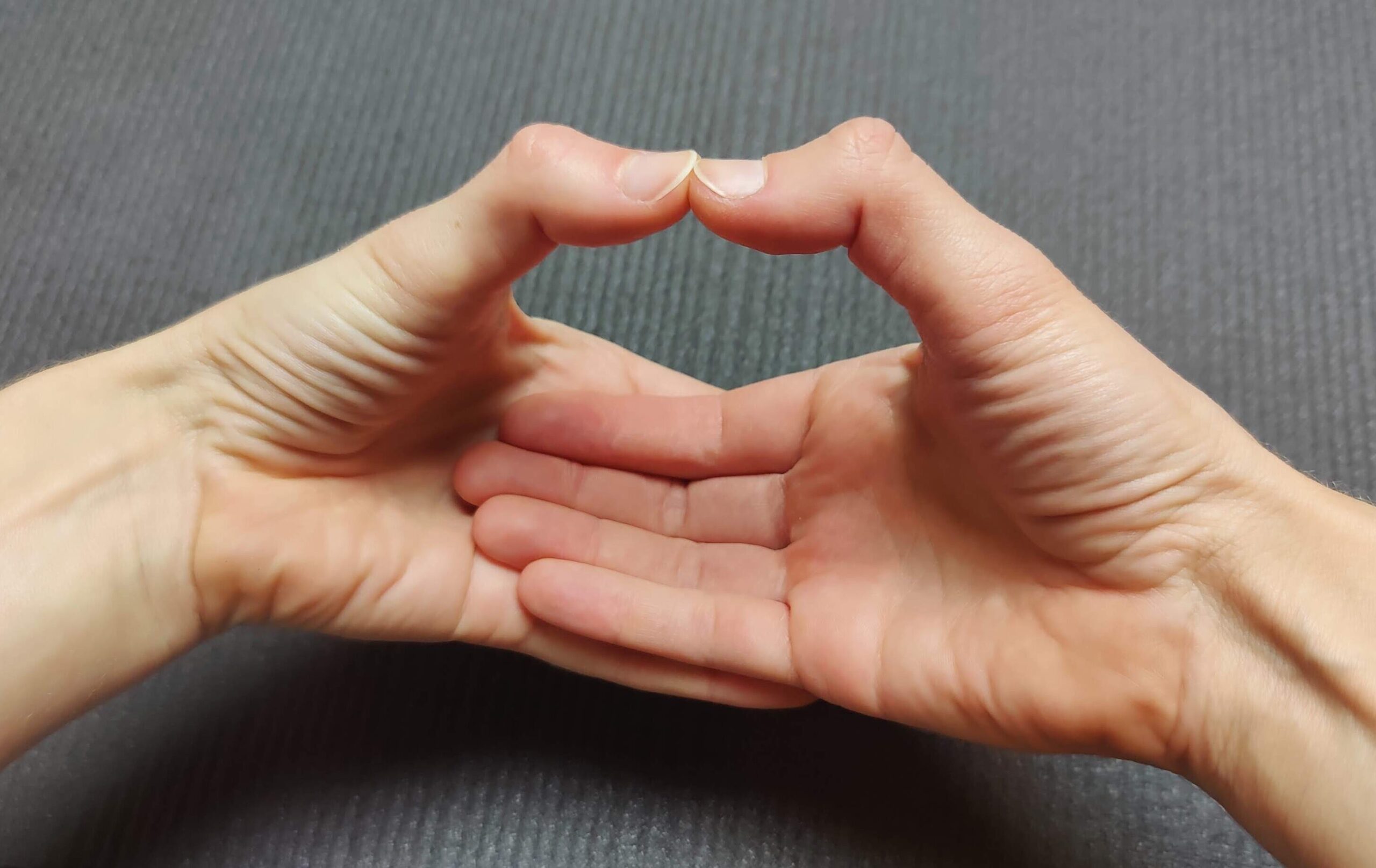In this article I will outline some of the most important Hasta Mudras practiced in Yoga and during seated Meditation. Before going into the details of what Hasta Mudras exist, it is important to mention that each of our five fingers represents one of the five elements.
Thumb is Fire, Index finger is Air, Middle finger is Space (Akash), Ring finger is Air and Pinky is Water.
1. Gyan (Chin) Mudra
What does it mean?
Gyan Mudra means Wisdom or Knowledge.
How to?
Connect the thumb and the index finger to form a circle. Keep the other 3 fingers extended and touching.
When to practice?
It is one of the most common Mudras used in the Buddhist, Hindu and Yoga world. You can practice Gyan Mudra during seated meditation, but also in Pranayama such as Ujjayi breath.
Benefits
Gyan Mudra increases the Air element in the body which is represented by the index finger.
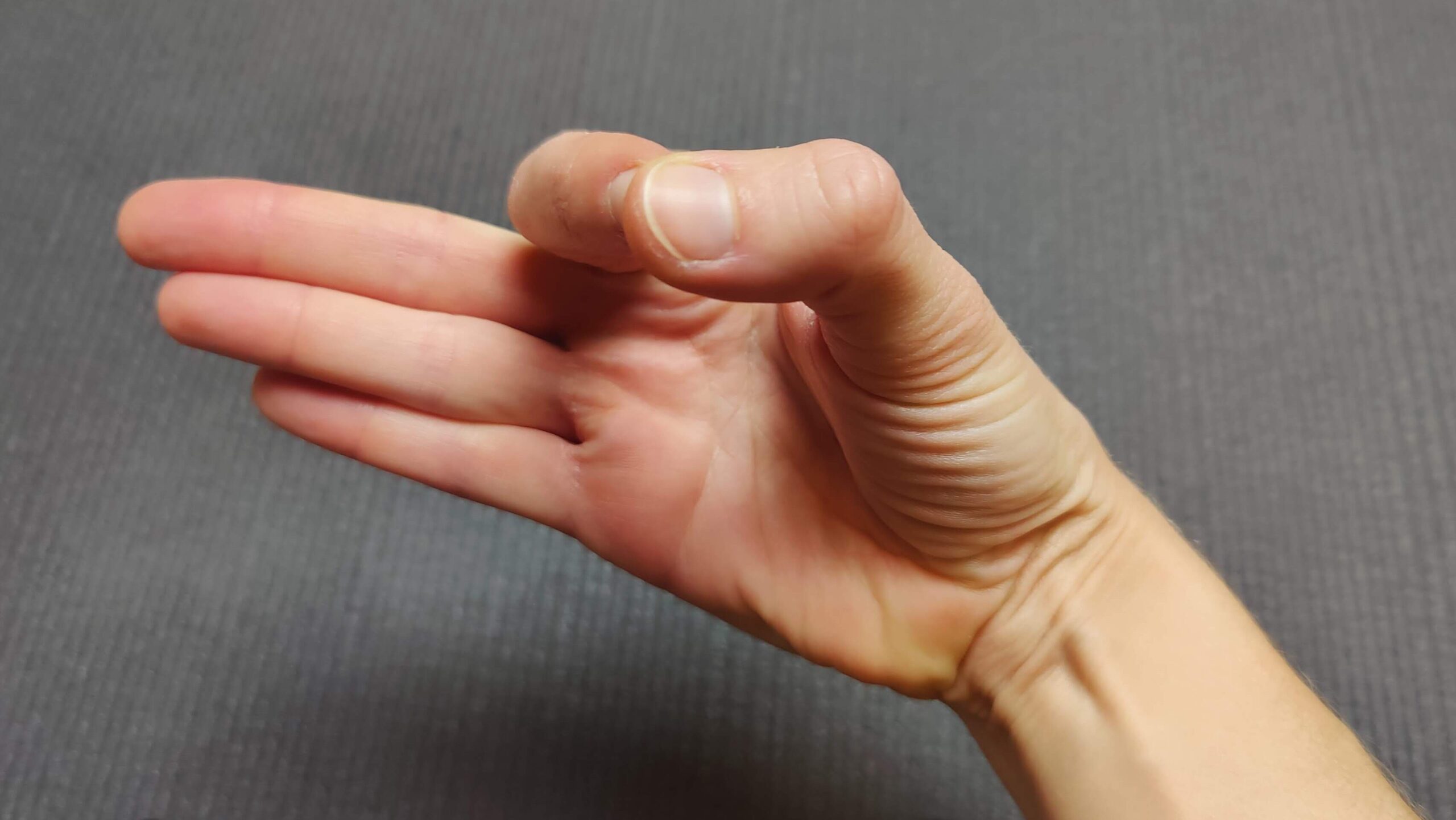
2. Shunya Mudra
What does it mean?
Shunya Mudra means emptiness, spaciousness, sky. The middle finger represents Space (Akash)
How to?
Place the base of the thumb on the middle finger. Keep the other 3 fingers extended.
When to practice?
During meditation with palms facing up.
Benefits
Shunya Mudra decreases the Space, Sky element in the body which is represented by the middle finger.
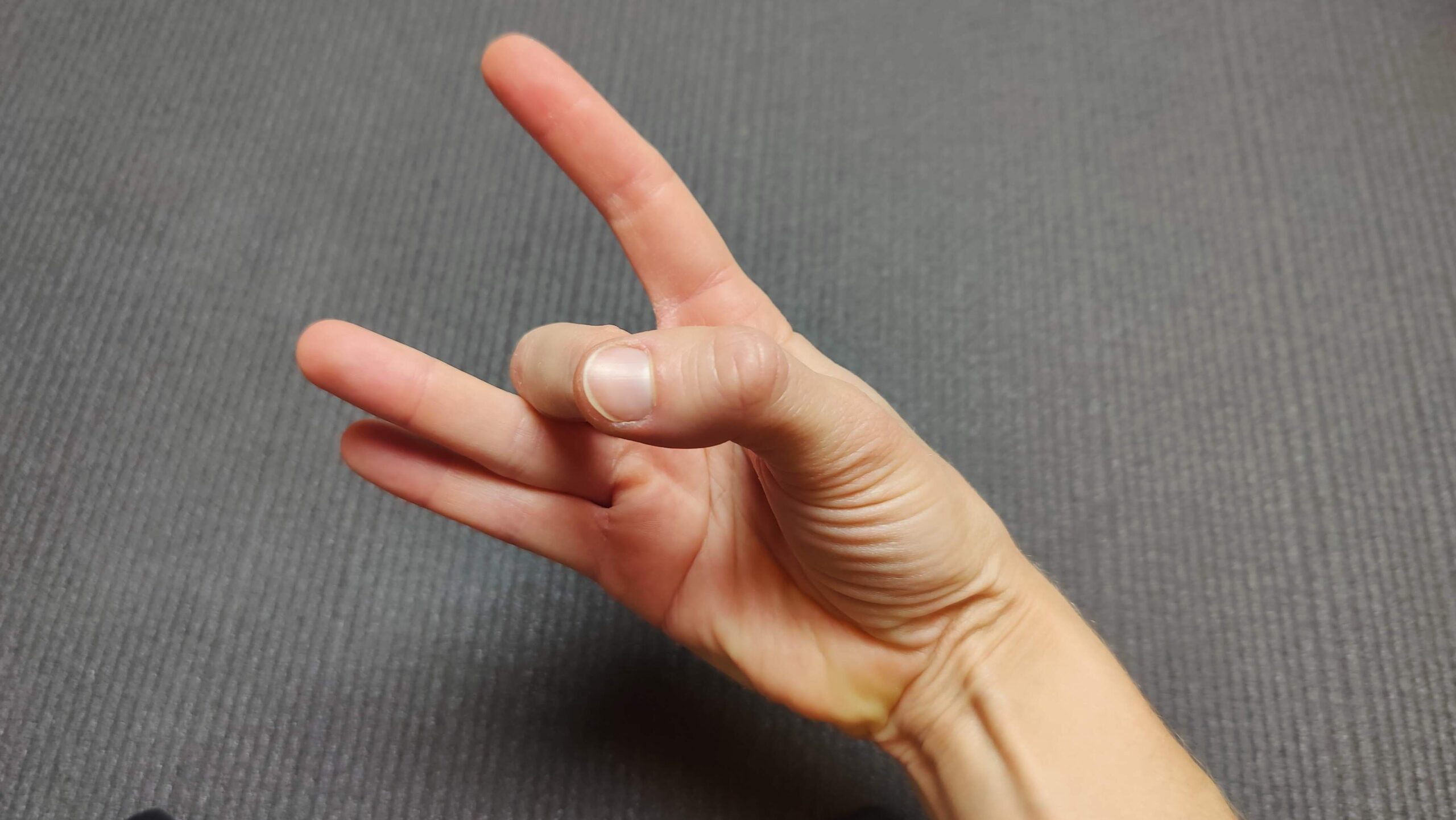
3. Apana Mudra
What does it mean?
Apana Mudra means Purification. It has a cleansing function.
How to?
Join the middle and ring finger and touch them with the thumb. Keep the index and pinky extended.
When to practice?
Practice in any comfortable seated position like Sukhasana (cross legged seated), Vajrasana (sitting on your heels) or even Padmasana (Lotus).
Benefits
This is known as the detoxification Mudra, it is also responsible for digestion and harmonizing the three elements of Fire (thumb), Space (middle finger) and Earth (ring finger).
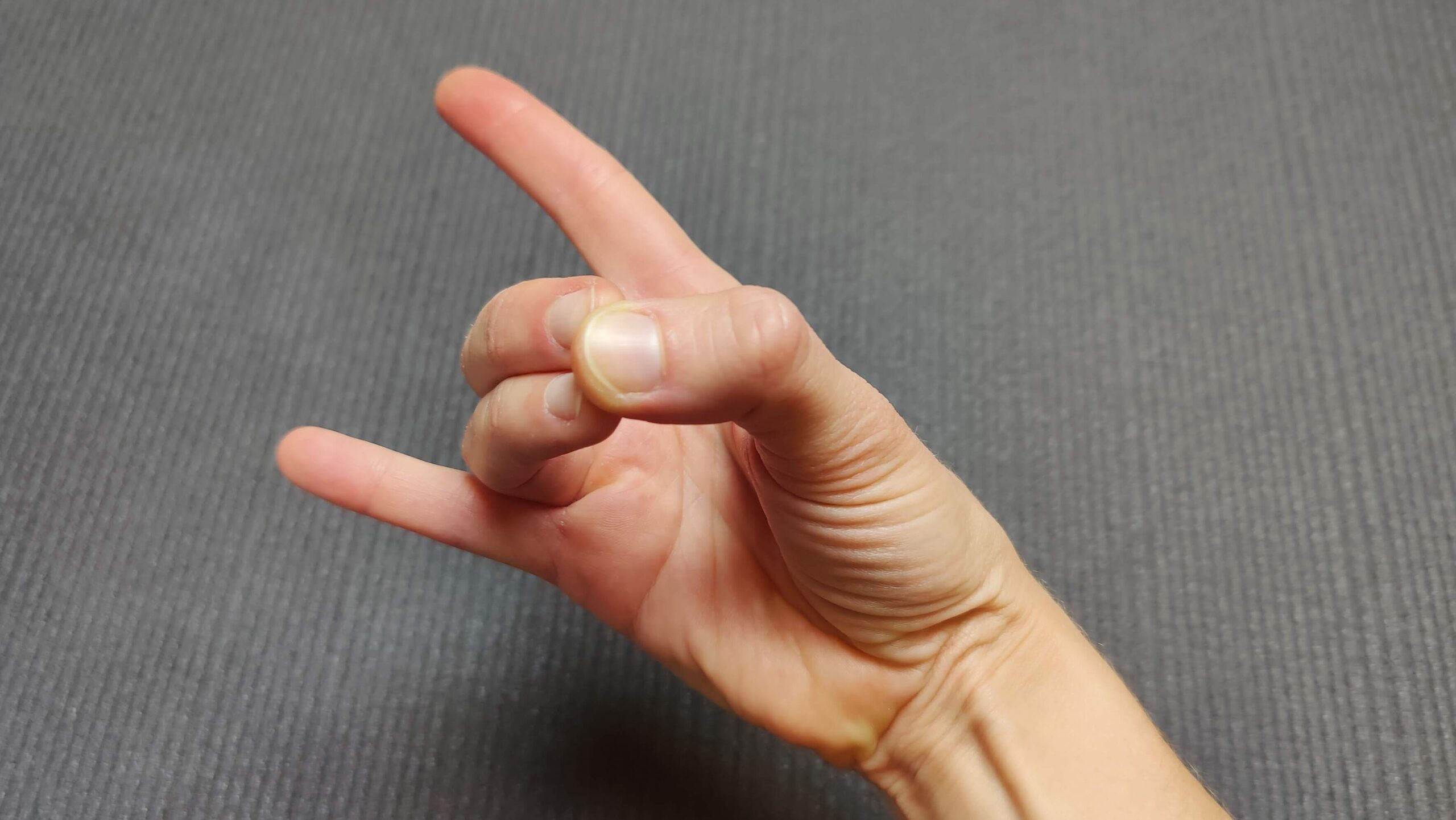
4. Prana Mudra
What does it mean?
Prana means life force energy.
How to?
Bring the thumb to the tips of the ring and pinky fingers. Keep the other two fingers extended.
When to practice?
As any other Mudra you can practice it during meditation.
Benefits
Prana Mudra channels the vital life force and activates the dormant energy in our body by combining and balancing the Fire, Earth and Water elements. It activates the muladhara (root) chakra.
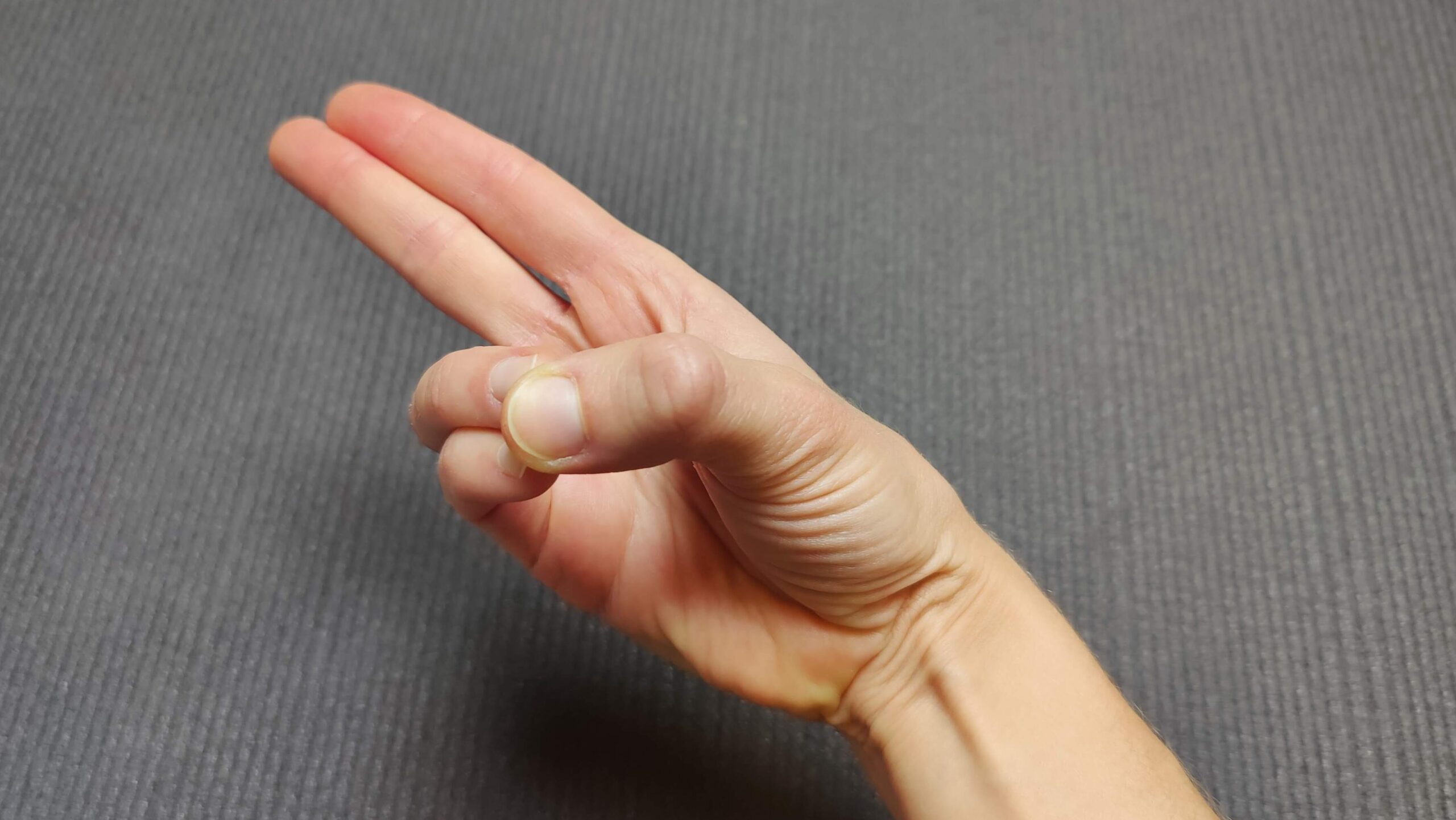
5. Vayu Mudra
What does it mean?
Vayu means air. The Air element in the body is reduced by pressing the index finger with the thumb.
How to?
Place the index finger inside the base of the thumb and press it gently down. Keep all other fingers straight. Vayu is very similar to Gyan Mudra but instead of touching the tips of the thumb and index finger, the thumb is pressing the index finger down.
When to practice?
During meditation or Pranayama if you want to reduce or harmonise the air element in the body.
Benefits
Vayu Mudra is related to mental health and it helps release emotions like sadness, grief or depression. It helps the air flow freely in the body and removes any blockages if there are such.
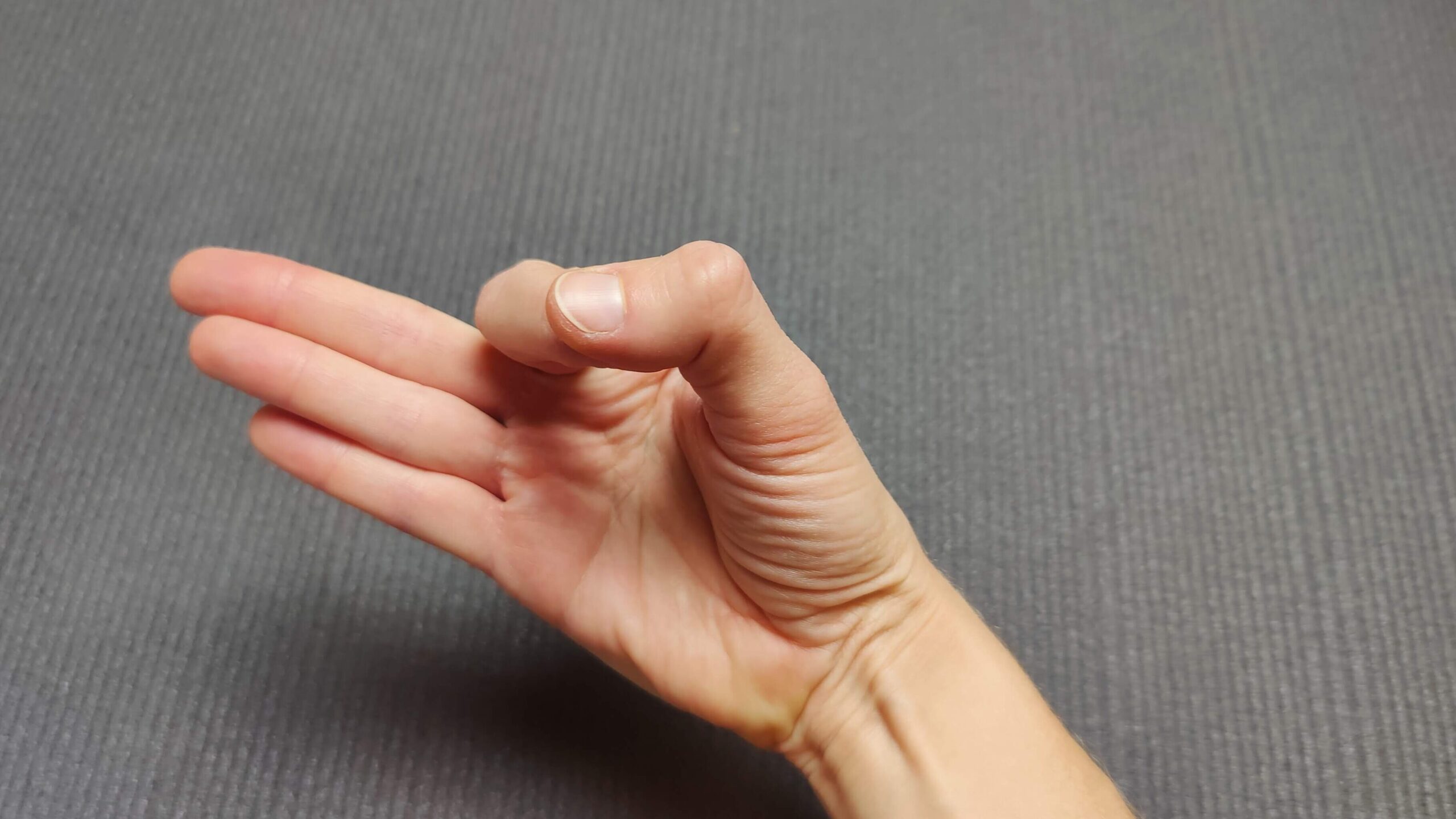
6. Prithvi Mudra
What does it mean?
Prithvi means “the vast one”, this Mudra is also known as Earth Mudra. The Earth element in the body is all about grounding, healing and spiritual balance.
How to?
Touch the tips of the ring finger and thumb on both hands and extend all other fingers.
When to practice?
In Sukhasana or Padmasana.
Benefits
Balancing the Earth element which resides in tissues, such as skin, hair and bones is crucial. This mudra also balances the Root Chakra (Muladhara) which is the first Chakra and is located at the base of the spine.
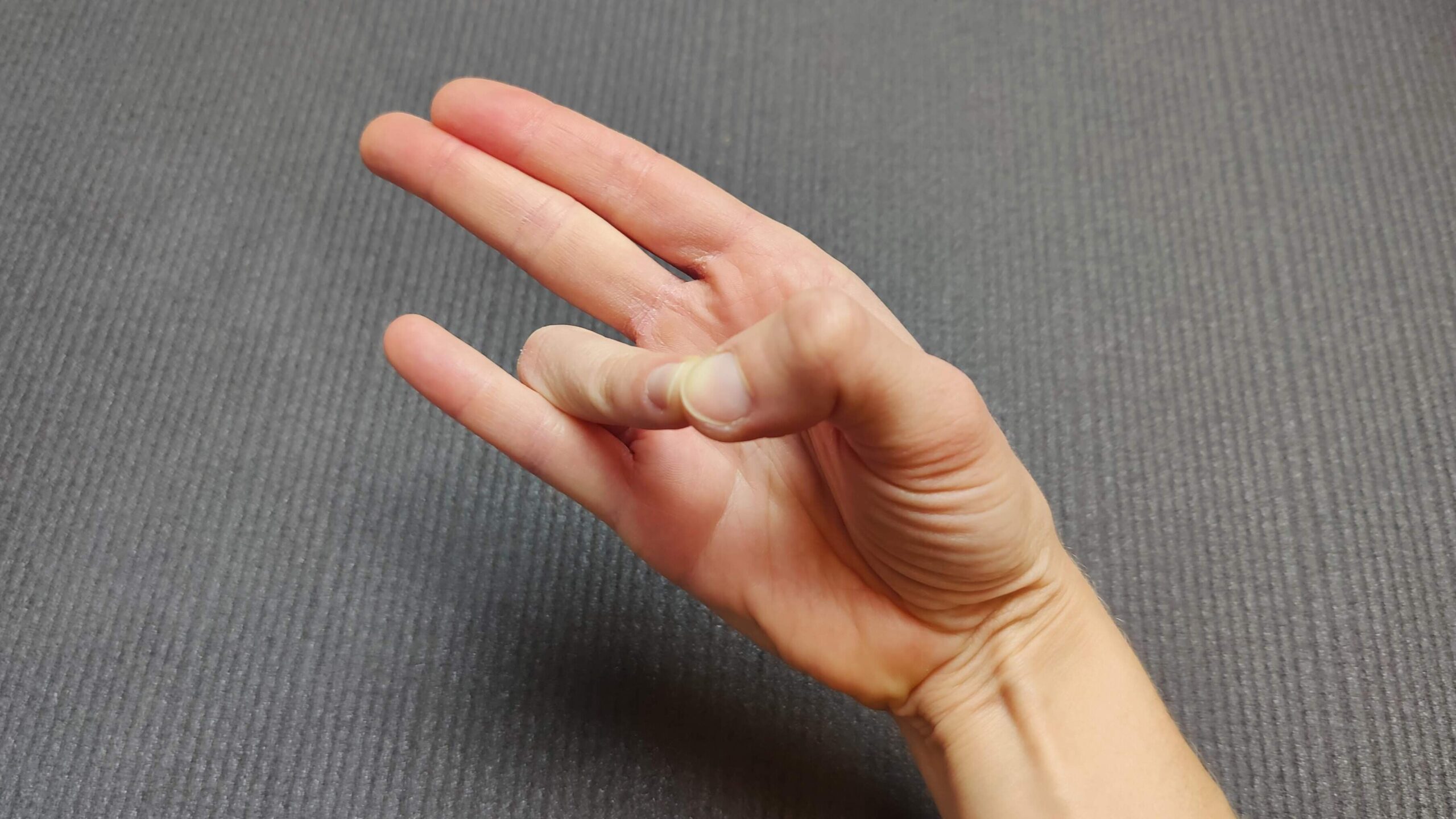
7. Varun Mudra
What does it mean?
Varun is the Hindu God of Water. Therefore, this Mudra balances the Water element in the body which is represented by the pinky finger.
How to?
Join the tips of the pinky finger and the thumb keeping all other fingers extended.
When to practice?
If your body lacks water you should drink more and also practice this Mudra in order to bring the flow back.
Benefits
Water element is also known as the freedom element. Keeping our bodies hydrated is crucial for us. The human body consists of around 60% water. This Mudra also keeps the mind clear.

8. Surya Mudra
What does it mean?
Surya means Sun. Surya Mudra is also known as Agni Mudra (Fire Mudra). By practicing Surya Mudra it is believed that we receive energy directly from the Sun. It activates the Fire element in our body.
How to?
Fold your ring finger so that it touches the base of your thumb and your thumb is on top.
When to practice?
Do not do this Mudra if you are sitting in the Sun and avoid it in the hot summer.
Benefits
It balances the digestive heat in the body, improves circulation and metabolism.
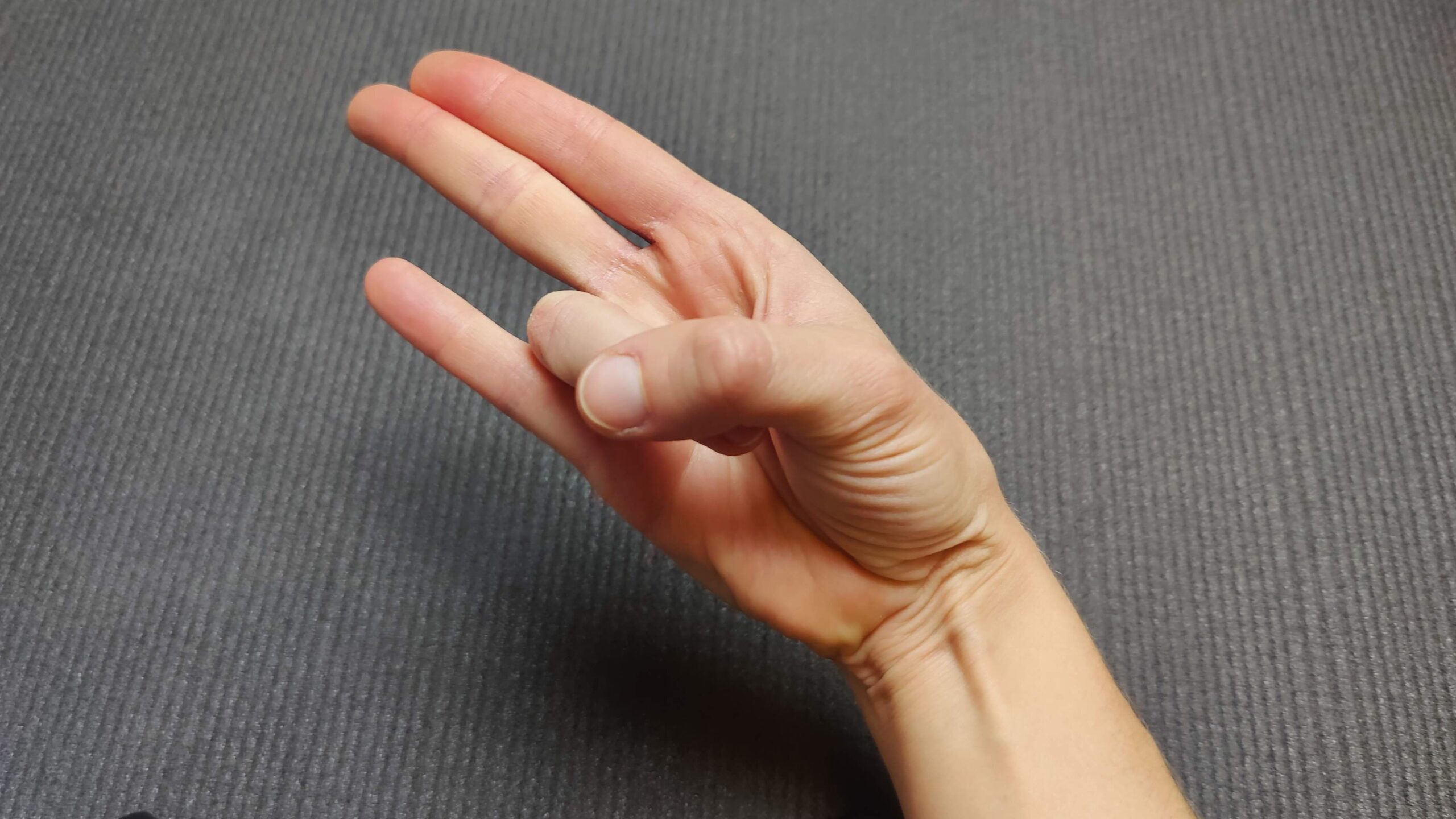
9. Dhyana Mudra
What does it mean?
Dhyana is means Meditation and is very popular in Buddhism, Hinduism and Yoga. By being the seventh limb of Patanjali’s Eight Limbs of Ashtanga Yoga, it is essentially the last state before Samadhi (eternal bliss)
How to?
Place the right hand on top of the left one, joining the thumbs together and forming a hole. By joining the thumbs together you can achieve balance between female and male energy.
When to practice?
In any meditative Asana.
Benefits
The right hand represents enlightenment and the left one illusion. By placing the right hand on top of the left one, illusion is diminished and high consciousness dominates instead. Dhyana helps to dive in a very deep state of meditation.
